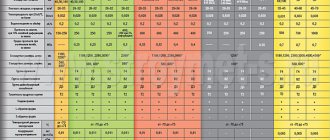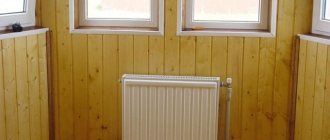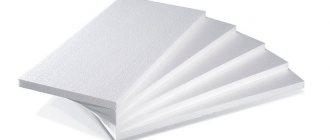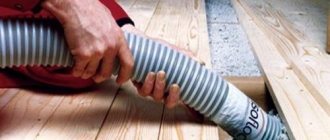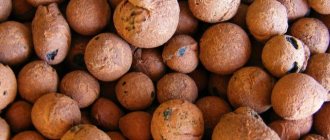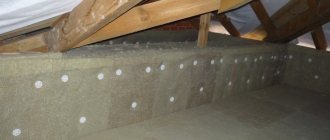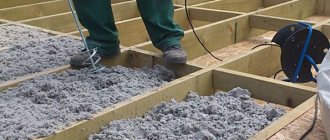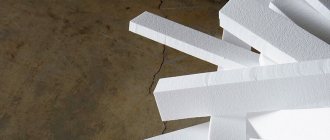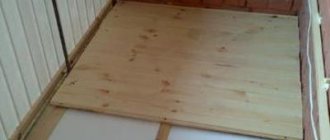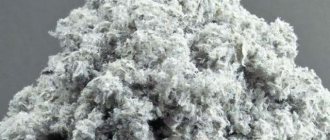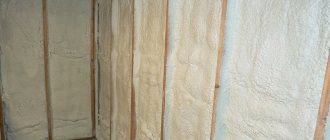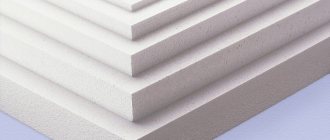Battle of insulation: ecowool and mineral wool, pros and cons, pros and cons
Choosing insulation for your home is not an easy task and requires a responsible approach.
What insulation is needed for heavy facades such as clinker and clinker tiles? What should you not do if your choice is ecowool? Why is glass wool dangerous? Is ecowool really an environmentally friendly material, as all manufacturers say? Do rodents eat basalt insulation?
In this article we will look at the pros and cons of the most popular options for thermal insulation: ecowool and mineral insulation (basalt wool and fiberglass insulation).
Ecowool: description, characteristics and properties
Ecowool is an insulation that is produced on the basis of recycled materials (processed newspapers, magazines, various periodicals), since insulation made from primary cellulose would cost a fortune. Already on this question we can say that ecowool is not “eco” at all: when printing, substances, paints, and bleaches that are harmful to health are used. Of course, during processing some of the substances are removed, but it will not be possible to completely get rid of them.
Moreover, in order to achieve fire safety level G2 (moderately flammable, without exposure to a fire source, support combustion for less than 30 seconds), recyclable materials are treated with fire retardants (borates, boric acid, aluminum sulfate, ammonia, benzene, etc.) in a ratio of 20-25% from the total mass of the insulation. For example, for a house of 100 m², 30-35 cubic meters of insulation will be used for the walls, about 30 cubic meters for the floors and attic, then we multiply the volume by the density of the material (35-75 kg/m³) and we get approximately 4 tons of insulation.
Based on the proportions, we can conclude that the insulation contains a total of 800 kg of harmful substances!
This insulation absorbs moisture from the air very well (high hygroscopicity), which is typical for all pulp and paper insulation. All websites of ecowool manufacturers mention that this is a “breathable” material. For example, ecowool in a frame cannot be covered with a vapor barrier, since this insulation must “breathe”; without air circulation, the thermal insulation will begin to rot, so this is more a necessity than an advantage. When this insulation “breathes,” water molecules “walking” in the air react with fire retardants, which in turn crystallize and lose their fire-resistant properties. Also, with an increase in the amount of water in the insulation, the quality of thermal insulation deteriorates, so heat loss occurs due to water. A pH level of 7.8-8.3 is an alkaline environment, although manufacturers claim that it is neutral (7) - it negatively affects metals - another disadvantage of ecowool. Due to the high content of fire retardants, the material is resistant to various fungi and microorganisms, but there is a downside: this can only be guaranteed with dry installation! BUT!: the amount of fire retardants drops significantly over time. Rodents do not eat this insulation (once again proving that there can be no talk of any environmental friendliness), but they are happy to make holes.
Advantages of ecowool:
- relatively low cost compared to basalt insulation;
- seamless installation: since the material is crumbly, it is blown into all hard-to-reach places in an even layer;
- simplicity and speed of installation: thermal insulation work with ecowool can be completed within 1 day (with dry installation, of course).
Cons of ecowool:
- not environmentally friendly material (high content of fire retardants);
- high hygroscopicity;
- alkaline environment of insulation;
- decrease in the level of fire retardants over time (decrease in fire safety, as well as resistance to fungi and microorganisms).
Let's move on to basalt mineral insulation.
Insulation with basalt wool
Basalt wool is an insulation material that is produced on the basis of volcanic rock - basalt. The stone melts in a cupola furnace at a temperature of 1500°C. Next, thin fibers are drawn out of the melt, a small amount of binding material is introduced, and the next stage is pressing and molding of the mats. One of the most popular brands is Paroc basalt insulation.
Both formaldehyde and other substances can act as a binder, so mineral insulation cannot be considered completely environmentally friendly thermal insulation. Mineral wool is a non-flammable or low-flammable material that does not support combustion, but it is worth mentioning that the maximum temperature of use can only reach 900°C. This insulation does not shrink and is vapor permeable. It is not hygroscopic, but it absorbs water well; drying the slabs is very problematic; it is more likely that you will simply throw away the wet basalt wool. Rodents do not eat mineral insulation, but as with ecowool, they make burrows perfectly. Basalt slabs have good thermal insulation properties, but can be blown through the seams and along the surface itself if they are of low density. When working with basalt wool, you must definitely use protection (gloves, goggles, mask), as the dust hurts your eyes, itches your throat, and itches your skin. In various comparative articles they may write that basalt thermal insulation has poor adhesion to adhesive compositions and that clinker or clinker tiles in combination with such insulation is a bad idea, but in this case you need to remember: for a heavy facade, high-density insulation is used, as well as high-quality adhesive the basis!
Advantages of basalt wool:
- excellent thermal insulation properties;
- low thermal conductivity (0.032 to 0.048 W/m*K)
- the material is not flammable and does not support combustion;
- durable, not subject to decomposition;
- does not shrink;
- vapor permeable and non-hygroscopic.
Cons of basalt wool:
- absorbs water very well, it is very difficult to dry completely, but even after this the slabs may begin to crumble;
- can be blown at the junction of the plates.
Fiberglass mineral wool
Glass wool is a fibrous mineral thermal insulation material, a type of mineral wool. To obtain glass fiber, the same raw materials are used as for the production of ordinary glass or waste from the glass industry. One of the most worthy manufacturers of such thermal insulation is Ursa.
The starting materials for the production of glass wool are sand, soda, dolomite, limestone, borax (or etibor). Modern production uses up to 80% cullet. When working with this type of insulation, the following are required: closed clothing, a respiratory mask, gloves, as dust hurts the eyes and throat. Fiberglass insulation is almost twice as heat-resistant as basalt wool (operating temperature: -60°C - +450°C). It is worth noting that the length of fiberglass is 2-3 times longer than basalt, so fiberglass insulation is less dense, but more elastic (loose insulation materials are destroyed faster for objective reasons). And, despite this, the material is subject to shrinkage, so fiberglass can be used on surfaces that are not subject to high pressure. Glass wool is cheaper than basalt insulation, has good thermal insulation properties, but requires good waterproofing, since when wet it loses these characteristics (water absorption up to 25%).
Advantages of fiberglass insulation:
- relatively low cost;
- good thermal insulation properties, can be compared with basalt insulation.
Ecowool
It's time to think about what influence we, voluntarily or unwittingly, have on the world around us, on ourselves and on the people close to us. Therefore, construction companies in Europe and the West are concerned not only with how to build a house at the lowest cost, but also strive to use environmentally friendly materials in construction. The demand from consumers of construction services for safe materials has also increased. Many are willing to overpay, but live in a clean environment at home and not pollute the environment. This is the choice of modern man. There is no need to overpay for ecowool, nor do you have to doubt its environmental friendliness. Definitely a budget option, affordable for many, but guaranteeing safety, energy saving and care for natural resources.
Mineral wool or ecowool - which is better?
Memories of winter chill your soul and body, and you, in search of effective insulation, cannot decide: Mineral wool or ecowool - which is better? Then this information will put everything in its place. So, drumbeat... Let's start the insulation competition. May the warmest one win!
Summary:
Mineral wool and ecowool: what are these materials?
Minvata
Both insulation materials are designed for a wide variety of thermal insulation systems, but have different compositions, and with them properties and characteristics. Let's figure out which material will work 100%.
Ecowool contains 80% cellulose, and the auxiliary substances are borax and boric acid. Natural fiber itself is very quickly destroyed by microorganisms and burns, but additives can inhibit these processes for a certain time.
Certified Rockwool mineral wool consists of more than 95% natural stone of the gabbro-basalt group and a small amount of organic binder. The fabric fibers are biologically resistant, do not corrode and are fire resistant.
We can safely conclude that the first round is for fibers from stones. Perhaps the technical characteristics of thermal insulators will change the score? Let's see!
Mineral wool and ecowool: comparison of properties and characteristics
Basalt fiber is available in different forms: mats, slabs, insulating cylinders, with or without a foil layer. But ecowool is a loose material made from ground paper, which is directly moistened with water during installation or mixed with an adhesive composition. The very fact of “preparing” insulation outside the factory raises suspicions. So, let's look at the main characteristics of insulation in comparison.
- Density. For Rockwool mineral wool, this parameter is constant within the product and is strictly controlled in production. But there are a lot of modifications of the mineral sheet itself with a coefficient from 30 kg/m³ to 220 kg/m³; there are even slabs with a top, more rigid and correspondingly dense layer, which allows you to install a two-layer thermal insulation system at a time. But cellulose wool is supplied in briquettes and prepared directly at the installation site. A mistake by the master or uneven mixing can significantly affect its quality. That is, the density of the finished layer varies in the range from 26 to 95 kg/m3.
When installing thermal insulation from waste paper, reinforcement and other methods of ensuring the desired shape and rigidity will be required, but mineral wool, the density of which can be easily adjusted to the requirements of the system, holds its shape well and can be quite elastic in roll form.
- The thermal conductivity of Rockwool mineral wool is in the range of 0.035 - 0.039 W/m•K, which is achieved due to the air contained in its structure. For cellulose material, this figure is slightly higher than 0.037-0.042 W/(m*K), that is, it will inhibit heat transfer worse. Installation of mineral wool
- The non-flammability of mineral wool makes it popular in multi-storey construction, since insulation systems based on basalt not only do not support combustion, but are also able to inhibit the spread of fire. Paper thermal insulation cannot boast of such properties.
- The vapor permeability of thermal insulation is an important factor, given that the strongest enclosing structures are destroyed under the influence of condensation. Despite the density of mineral wool, it is capable of effectively transmitting vapors in the range of 0.25 - 0.35 mg/m²•h•Pa. It is worth noting that the lower limit of values is indicated for mini-boards with a very high density, which is not even close to being found in the range of cellulose wool. The opponent of basalt products at the lowest density transmits only 0.3 mg/(mchPa).
- The hydrophobicity of mineral slabs and rolls keeps the thermal insulation layer dry, since stone wool does not absorb moisture from the air and leaves no more than 1.5% water in its structure after full or partial immersion. “Paper” material can retain up to 20% humidity.
- The strength of Rockwool mineral wool insulation significantly expands the scope of its application. Some rigid basalt fiber slabs can withstand a distributed load of 70 kPa, which is 700 kg/m² for a minute. That is why stone wool is widely used in the construction of load-bearing structures, for example, roofs in use. Cellulose fibers are not competition here.
Name of materialThermal conductivity, W/m*KVapour permeability, mg/m*h*PaMoisture absorption, %Flammability group
| Minvata | 0,037-0,048 | 0,49-0,6 | 1,5 | NG |
| Ecowool | 0,032-0,041 | 0,3 | 1 | G2 |
Installation methods and practicality. For high-quality mineral wool, everything is simple: choose rolls, slabs or molded products according to the parameters of the object being insulated. Then the products are trimmed to fit and fixed mechanically or with adhesive. But loose bulk material must first be prepared, then applied either with a special blow molding installation or manually. The latter requires high concentration of attention and time and labor costs.
: Properties of Rockwool stone wool
Note! The temperature of work for a mineral insulator is not limited, since Rockwool basalt insulation retains its properties at low negative temperatures and high-temperature heating. For wet and adhesive compositions on paper and wood fibers, application is carried out only in positive values.
Many may argue that ecowool is laid without seams, but for mineral wool they are minimal due to the slightly springy edge, which ensures a tight fit of the fibrous insulation. There will be no cold bridges!
In all basic technical characteristics, ecowool is inferior to mineral fiber and can only be used on small objects.
The best prices for mineral wool this week!
| RockwoolLIGHT BUTTS | BaswoolFACADE 140 | URSA GEOPitched roof |
Basalt thermal insulation products and Rockwool slabs, produced in production conditions on automated lines, meet high standards. Thermal conductivity of mineral wool, high performance characteristics, fire safety, wide temperature range of application have made the material a leader in the construction of insulation systems in multi-storey buildings, technical engineering systems, and equipment.
If you are still arguing whether mineral wool or ecowool is better, then think about what reckless savings will cost you. Good insulation should not cost ridiculous money. Buy time-tested Rockwool thermal insulation, then your home will be warm and your wallet will be safe!
Source: https://kupi-uteplitel.ru/minvata-ot-baustof/
Disadvantages of ecowool - myths and reality
But ecowool is also not ideal, there is a drop in the ointment, a page of our website is dedicated to it. But we’ll try to dispel some misconceptions about toxicity here.
The first argument of ecowool opponents from among competitors: “Boric acid belongs to class III. dangers" and cite GOST 18704-78 as a weighty argument. However, having opened GOST, you can easily understand that these are specifications for the production of boric acid and there is a direct link to the classification of chemicals - GOST 12.1.007-76, which explains in detail that the third class is moderately dangerous among chemicals. Along with boric acid, the list includes nickel, aluminum, manganese, iron, silver, etc. We hope that after these discoveries you won’t want to throw away your family silver? And a dose of boric acid taken orally is considered toxic: 15-20 g (tablespoon) for adults and 4-5 g for children.
The second argument is that “ecowool generates dust when installed dry.” But how many construction and finishing operations can be considered “clean”? There is no point in arguing here - it’s a normal working moment.
The third argument against ecowool is that it is essentially cut newspaper, and printing ink is harmful.” The days when paints contained heavy metals are long gone - expensive and not profitable. Today, printing houses use pigment and mineral oils.
Another argument is that “small producers do not provide the proper quality.” Manufacturers of many materials are guilty of this, and we always encourage careful selection and verification of certificates of conformity. We ourselves work only with reliable partners. And we feel free to talk about the disadvantages of ecowool.
Mineral wool or ecowool, which is better? Comparison of the two
When building or improving a house, developers often have a question: mineral wool or ecowool, which is better? In order to make the right choice between these materials, it is necessary to compare their technical characteristics and installation features.
What is mineral wool and ecowool
Mineral wool and ecowool are materials used for insulating walls and ceilings. Despite the identical purpose, there is an important difference between them: they are made from different materials and using different technologies. Technical and operational characteristics are also different. The choice between these insulation materials is not easy, since each of them has its own advantages.
Which is better, ecowool or mineral wool?
Ecowool or mineral wool are materials with a loose structure, consisting of many fibers. The thermal insulation effect is ensured by the presence of air between the fibers. It accumulates heat retained by the loose structure. When choosing, pay close attention to the characteristics of the material.
To make mineral wool, two types of fibers are used, obtained from glass or basalt rocks. Any of these materials belongs to the mineral category, hence the name of wool: “mineral”, “stone”, “basalt”. All these products have largely similar thermal conductivity and moisture absorption characteristics. Moreover, the technical characteristics directly depend on one parameter - density. The higher it is, the lower the thermal conductivity and moisture absorption.
Considering the demand for different types of insulation, mineral wool manufacturers offer several modifications of these materials that differ in density. The list of products, compiled in ascending order of this indicator, is as follows:
- loose rolled cotton wool;
- light slabs;
- soft slabs;
- semi-rigid slabs;
- cylinders and half-cylinders;
- hard slabs.
Minvata
Mineral wool is one of the most common types of insulation for insulating various elements of a building, that is, insulation is laid in the roof, floor and interior floors, floors, walls, both inside and outside the room. Tiled or rolled mineral wool allows you to quickly insulate a house, bathhouse, and various utility and non-residential premises.
Such popularity of mineral wool is easily explained by the wide selection of varieties, brands, and availability in retail chains. Also low cost, ease of installation, high heat and sound insulation characteristics. But there is another side - a negative one, which sometimes outweighs all the positive qualities of many varieties and brands of mineral wool. The use of formaldehyde resins as a binding component to form an insulating layer significantly reduces its environmental friendliness, but reducing the component reduces the moisture resistance of the finished insulating material. Only some types based on basalt fiber do not contain harmful toxins. In its pure form, it is difficult to impart the required density to mineral wool; there remains a risk of dust from mineral fibers getting into the air of the insulated room, so it is mainly produced in rolls or mats with already formed density and rigidity.
Ecowool: comparison with other insulation materials
Ecowool is a modern thermal insulation material with a low shrinkage rate, good resistance to water, and has high sound insulation properties. A similar characteristic can be found about almost any thermal insulation product, but it is only possible to evaluate how effective the material really is by comparison. In this article we will try to compare ecowool with the most common insulation materials.
Ecowool
What are we comparing?
For comparison, let's take insulation materials that are often used to insulate a house: basalt wool and fiberglass-based mineral wool. The choice fell on these materials, since their scope of application is quite wide. They are suitable for insulating walls, floors, roofs, soundproofing partitions, etc.
- Ecowool - 80% consists of cellulose fibers, the raw material for which is recycled paper. The remaining 20% is boric acid and borax. The latter is a fire retardant, which increases the fire resistance of the material. The insulation is made in the form of a loose mixture.
Insulation of the facade using ecowool
- Basalt mineral wool is made from straightened rocks with the addition of phenolic resins; the material is produced in the form of slabs.
Basalt mineral wool has a characteristic brown tint
- Fiberglass mineral wool is made from molten glass or sand. It has a fibrous structure. Often produced in roll form.
Personal protective equipment is required when working with fiberglass
Designed to keep you warm.
As it may seem at first glance, the main purpose of thermal insulation material is to retain heat, which means that the main characteristic will be thermal conductivity. In reality, things don't work out quite like that. For all insulation materials this indicator is approximately at the same level.
- Ecowool – 0.037 – 0.041 W (m*K)
- Basalt mineral wool – 0.036 W(m*K)
- Fiberglass – 0.036 W(m*K)
Seamless installation
Ecowool differs from “traditional” heat-insulating materials in the installation method. Basalt mineral wool and fiberglass are produced in rolls or slabs. They are cut into rectangular pieces and laid between joists, sheathing or rafters, depending on the place where the insulation is installed. Installation of ecowool is carried out using the “dry” or “wet” application method. Thanks to this, a continuous insulating layer is obtained without seams or joints. When laying mineral wool and other slab materials, the seams remain “cold bridges”.
The use of specialized equipment allows you to lay ecowool in hard-to-reach places
Ecowool is laid manually or automatically. Manual is more labor-intensive and does not always allow achieving the same insulation density in all areas. Automated installation is carried out through a blowing machine with a corrugated hose. “Wet” or “dry” application method is selected depending on the surface.
When it comes to installation, it is difficult to choose an undisputed leader. On the one hand, the seamless application method allows you to get rid of “cold bridges”; on the other hand, the installation process itself becomes more complicated. In addition, “wet” styling will require drying time (2-3 days).
Not like fish in water
The relationship between moisture and insulating materials can be described as complex. Here we need to return to thermal conductivity again. Under normal conditions, as we have seen, this figure is approximately the same for different thermal insulators, but everything changes when moisture gets on the insulation. All materials behave differently. The most moisture-sensitive material is basalt mineral wool; when moistened by 1%, its thermal conductivity increases by 9–8%. Fiberglass also does not tolerate water well, but recently products with enhanced moisture resistance have begun to appear.
Moisture distribution inside ecowool and mineral wool fibers
What's going on with ecowool? It absorbs water, but thanks to the fibrous structure, all the moisture gets into the fibers, and the empty space with air (which is the main heat insulator) remains free, as a result, when humidified to 20%, the thermal conductivity remains unchanged.
Ultimately, the water resistance parameter is relevant only in the event of force majeure (roof leakage, waterproofing breakthrough, etc.). Subject to compliance with building codes and regulations, water should not get on the insulation, so this indicator should not become decisive when choosing a particular insulation material.
Density and weight
The higher the density of the insulating material, the greater its weight per unit area. With greater weight, the requirements for supporting structures increase. This is especially true when installing a roof. Also, in the case of ecowool, the density is affected by the uniformity of application.
What is ecowool
Remembering that suburban construction in Russia began to actively develop in recent times, ecowool appeared relatively recently in St. Petersburg and the Leningrad region. Acquaintance with Ecowool in low-rise suburban construction in St. Petersburg began in unfavorable conditions for it: it was unclear about the supply of cellulose insulation, not to mention the equipment for installing Ecowool, although it was used in Europe even in pre-war times. But even in our time, we still hear from construction teams who have built more than one country house: ECO-WOOL - what is it?
Ecowool is an environmentally friendly material that consists entirely of natural ingredients:
- borax – 7%;
- boric acid – 12%;
- recycled cellulose – 81%.
The loose consistency of ecowool allows for seamless installation, after which there will be no drafts, mice or insects in the house. There is no problem with residues - there is no waste during installation, every gram of ecowool will reliably protect your home.
Ecowool or mineral wool, which is better?
Memories of winter chill your soul and body, and you, in search of effective insulation, cannot decide: Mineral wool or ecowool - which is better? Then this information will put everything in its place. So, drumbeat... Let's start the insulation competition. May the warmest one win!
Summary:
Ecowool: comparison with other insulation materials
Ecowool is a modern thermal insulation material with a low shrinkage rate, good resistance to water, and has high sound insulation properties.
A similar characteristic can be found about almost any thermal insulation product, but it is only possible to evaluate how effective the material really is by comparison.
In this article we will try to compare ecowool with the most common insulation materials.
Ecowool
Ecowool versus mineral wool and expanded polystyrene: comparison
In the insulation market, the most noticeable competitors are polystyrene foam and mineral wool, but there is literally a gray “horse” - ecowool. Will this relatively new insulation be able to compete with the “oldies”. To do this, we compared the parameters of all materials.
To complete the picture of the opposition between insulation materials, we recommend reading an article comparing mineral wool and expanded polystyrene (link at the end of the article)
What is ecowool?
If expanded polystyrene and mineral wool do not need any introduction, then we need to talk about ecowool in more detail.
Ecowool is a crumbly gray mass, the main raw material is recycled paper (cellulose), and also contains boric acid and borax.
Thermal conductivity
Thermal conductivity is a key parameter of insulation, but for almost all insulation materials it is approximately the same, otherwise they would not be insulation.
Ecowool
—
0.03 — 0.04
W/m*S
, PPS — 0.03 — 0.04 W/m*S, EPPS — 0.02 — 0.03 W/m*S, mineral wool — 0.03 — 0.05 W/m*S.
Vapor permeability
The ability to transmit steam in ecowool (0.35 mg/(m h Pa)
is at the level of mineral wool.
Expanded polystyrene (EPS - 0.05 mg/m*h*Pa
, EPPS -
0.01 mg/m*h*Pa
) allows noticeably less steam to pass through.
Installation
Ecowool differs significantly from “classical” insulation in terms of installation. The usual forms of heat insulators are: roll or plate. Rolled materials are easier to roll out on horizontal surfaces, and slabs are convenient to insert into facades.
Ecowool is supplied to the façade using a powerful air flow through a corrugated hose.
Ecowool has a crumbly consistency, it is packaged in bags, and it can be applied manually or in an automated way (by blowing machine). Also, styling can be “wet” or “dry”. This installation method eliminates the obvious disadvantages of rolls and slabs - “cold bridges” that arise at the joints.
Moisture resistance
The winner in this dispute will be polystyrene foam: it does not lose its thermal insulation properties from water.
Mineral wool
does not tolerate moisture.
Structurally, it consists of many mineral threads. The liquid condenses between them, respectively, there is less air inside the material, and it is this that provides the thermal insulation properties of mineral wool. Humidification by just 1% leads to an increase in thermal conductivity by 8 - 9%.
Ecowool
consists of fibers that themselves can absorb water, so moisture gets inside the fiber and does not fill the gaps inside the insulator. This property allows you to withstand humidity up to 20% without increasing thermal conductivity.
In ecowool, moisture is located inside the fibers, and in mineral wool, between the threads
When designing a wall, it is designed to prevent moisture from getting on the insulation, so situations with wet thermal insulation material are force majeure. Ecowool does not allow you to completely abandon vapor barrier.
The vapor barrier protects the insulation from steam that escapes through the walls from the house to the street. When the temperature reaches the dew point, condensation forms.
Density
This characteristic affects the weight of the insulation per unit area, so they try to use less dense materials on the roof so as not to overload the structure.
In terms of this parameter, ecowool (35 - 65 kg/m3) is practically no different from other insulation materials, but due to the specific application of the material, the density may be different in different places. On vertical surfaces of facades it is better to use a denser one (65 kg/m3).
Flammability
Ecowool has class G2
(moderately flammable), the material does not support combustion and does not spread fire.
Mineral wool is NG
(non-flammable), and EPS and EPS belong to classes
G3
and
G4
.
Environmental friendliness
This is a rather arbitrary indicator, because mineral wool and EPS emit a small amount of harmful substances. However, ecowool is considered an environmental product because it is based on “natural material”. For this reason, many people prefer it for internal insulation.
Composition and properties of insulation
The following components are usually used in the manufacture of ecowool:
Quantity (%)
up to 80
Recycled waste paper (newspapers). Glossy and coated paper do not meet the specifications and are therefore not used.
12
Antiseptic. Prevents the penetration and development of pathogenic bacteria and fungi (mold)
8
Antipyrine. Reduces the level of fire hazard, makes the insulation unattractive to rodents and other pests
This composition is responsible for the low price of thermal insulation and its environmental safety. In essence, there is no toxic component, however, relatively good technical characteristics are preserved.
Now let's talk about properties. The performance characteristics of ecowool look like this:
Flammability class - G2 . Under the influence of high temperatures, crystallized liquid is released from the fibers of the material; accordingly, the insulation is poorly flammable and does not support combustion processes.
Biostability – high . The composition contains boric acid and borax, which neutralize almost any external factors and aggressive environment, making the material unsuitable for consumption by rodents and other pests.
Thermal conductivity indicators: 0.032–0.041 . The material reliably protects interiors from drafts and cold winds, reduces heat loss, and helps save on heating costs in the winter.
Density – up to 75 kg/m3. This ensures reliable sound insulation of the building and forms a reliable moisture-proofing layer.
In addition, ecowool is not produced in sheets or rolls, so during installation a monolithic thermal insulation is formed, completely eliminating cold bridges, seams and joints.
